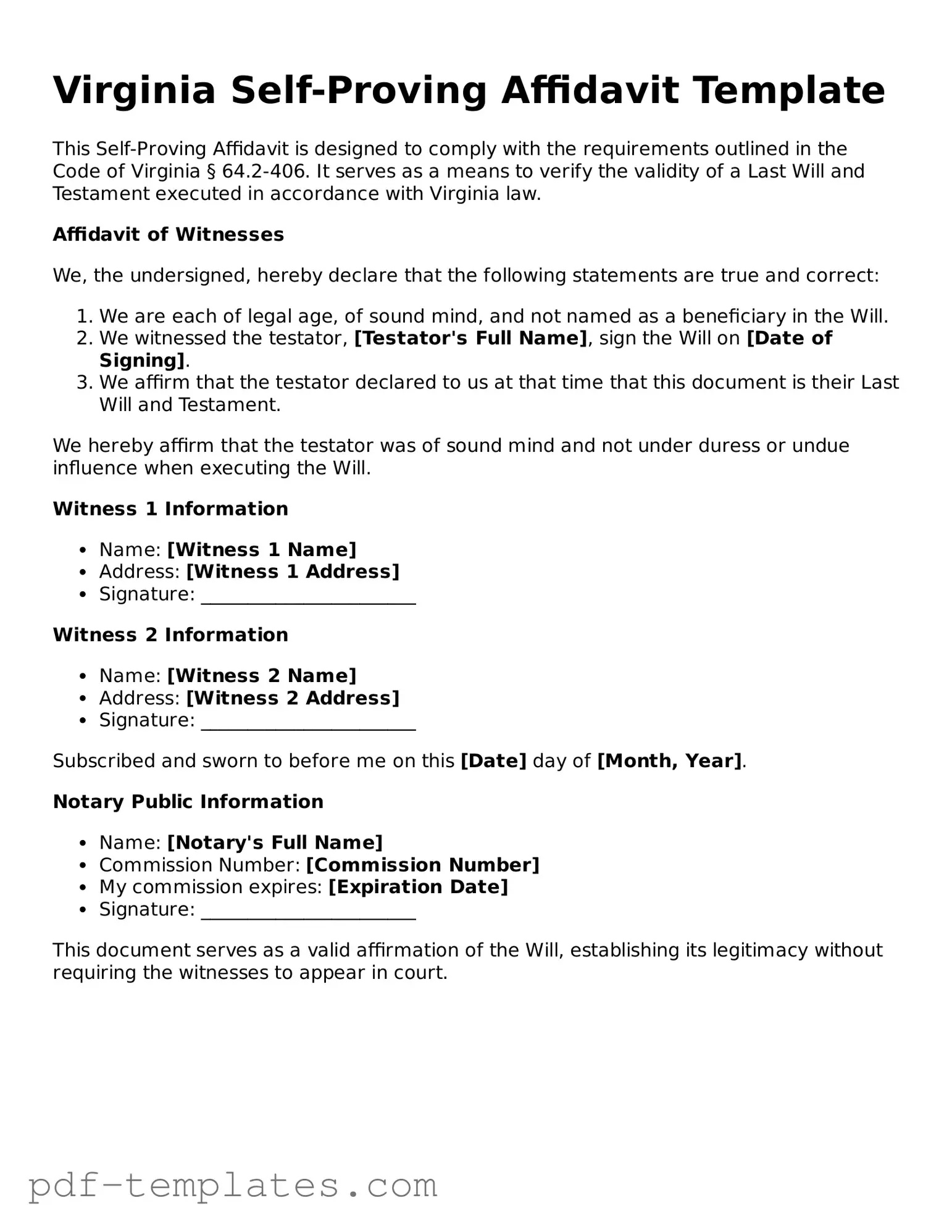The Virginia Self-Proving Affidavit form shares similarities with the Last Will and Testament. Both documents are essential in the estate planning process and serve to express an individual's final wishes regarding the distribution of their assets. The Last Will and Testament must be signed by the testator and witnessed, just as the Self-Proving Affidavit requires signatures from witnesses. The primary function of both documents is to ensure that the testator's intentions are honored after their passing, providing clarity and reducing the likelihood of disputes among heirs.
Another document that resembles the Virginia Self-Proving Affidavit is the Durable Power of Attorney. This document allows an individual to designate another person to make decisions on their behalf, particularly in financial or medical matters. Like the Self-Proving Affidavit, the Durable Power of Attorney requires the signatures of the principal and witnesses to validate its authenticity. Both documents aim to provide legal protection and clarity, ensuring that an individual's wishes are respected even when they are unable to express them directly.
The Living Will is also comparable to the Virginia Self-Proving Affidavit in that both documents address critical aspects of an individual's life and legacy. A Living Will outlines a person's preferences regarding medical treatment in situations where they cannot communicate their wishes. Similar to the Self-Proving Affidavit, it must be executed with proper formalities, including signatures and, in some cases, witnesses. Both documents serve to protect an individual's rights and preferences, ensuring that their desires are followed during challenging circumstances.
A Hold Harmless Agreement form in New York is a legal document that one party uses to protect themselves against liabilities from the other party's actions. This form is commonly employed in various business and personal transactions, ensuring that individuals or entities can operate without worrying about potential legal claims or losses. In times where clarity is essential, it's advisable to print the document to establish a clear understanding between the parties involved, offering peace of mind and a layer of protection during dealings.
The Declaration of Trust is another document that bears resemblance to the Virginia Self-Proving Affidavit. A Declaration of Trust establishes a trust, detailing how assets will be managed and distributed. Both documents require clear and precise language to convey the intentions of the individual involved. Additionally, both the Declaration of Trust and the Self-Proving Affidavit must be executed with the appropriate formalities to be legally binding. They serve to provide structure and guidance in the management of assets, ensuring that the individual's wishes are honored.
Lastly, the Revocable Living Trust is similar to the Virginia Self-Proving Affidavit in that it allows individuals to control the distribution of their assets during their lifetime and after death. Like the Self-Proving Affidavit, a Revocable Living Trust must be properly executed, often requiring the signatures of the grantor and witnesses. Both documents aim to streamline the estate planning process and minimize potential conflicts among beneficiaries. They provide a framework for asset management that reflects the individual's intentions and preferences.
